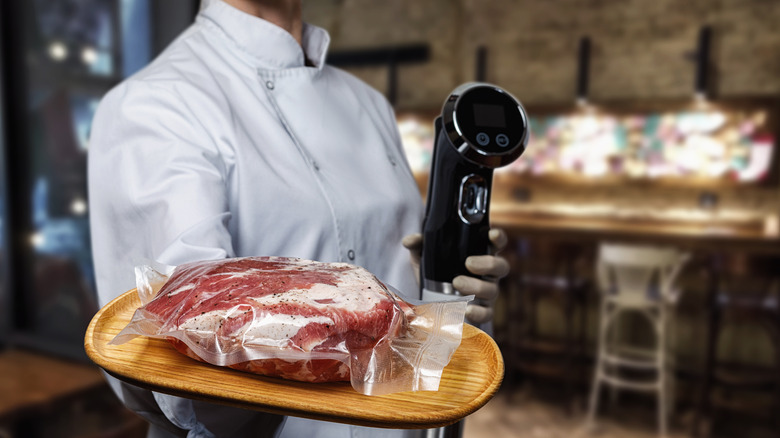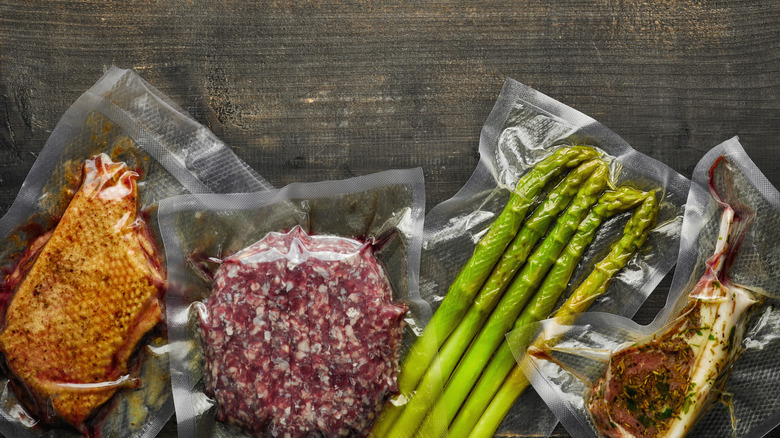The Big Mistake You're Making When Using A Sous Vide
A sous vide is the perfect instrument for the chef who loves precision. For those who aren't yet in the know, sous vide cooking involves sealing food in an airtight bag and submerging it in temperature-controlled water, per Bon Appetit. Because sous vide instruments can regulate water temperature and cooking time so precisely, your food will be cooked evenly, and you will have very consistent results over the long haul. In addition, Anova Culinary notes that the food cooks in its own juices and retains all of its water, which creates moist, juicy, and tender mouthfuls — even if you're working with a cheap cut of meat. The best part? This cooking method requires very little of your attention if you've set up everything correctly. Once your food is cooking in the submerged water, you can leave and do something else.
However, there are a number of common mistakes that sous vide beginners tend to make which can result in disaster. One of the biggest ones, as Digital Trends points out, is improperly sealing sous vide bags. Whether you use Ziplock bags, vacuum-sealed pouches, or silicone bags, you need to triple-check that your bag is tightly sealed. Otherwise, water will infiltrate the bag and create a soup out of your precisely crafted meal. Some chefs recommend double-sealing your bags if you are using vacuum-sealed pouches, as this is a fail-safe way to prevent leakage.
Other common cooking mistakes with a sous vide
Cooking with a sous vide takes some getting used to, whether you're a seasoned chef or a beginner. According to Digital Trends, another common but detrimental mistake is failing to remove all the air from your sous vide bag. If air is left in the bag when you place it in the water, the bag and its contents will float to the surface instead of remaining submerged in the water. When this happens, the food will cook unevenly and create quite an unpleasant meal.
Chef Brad Leone from Bon Appetit demonstrated how to fix this by using a pot of cold water. In the demonstration video, Chef Leone seals a Ziplock bag containing raw steak but leaves about one inch of the bag open. He places the bottom of the bag in the pot of cold water, then gently pushes it down, letting the cold water push the air out of the bag. He then seals the rest of the bag and pulls it out of the pot.
It's also important to cover the water bath with a lid after submerging your food and turning on the sous vide. If you do not cover the container, Sous Vide Tools states that the water will evaporate and can leave the pouches only half-submerged. It's also not uncommon for sous vide-cooked steaks to have rubbery fat. To fix this, quickly pre-sear your meat before submerging it to help render the fat.

